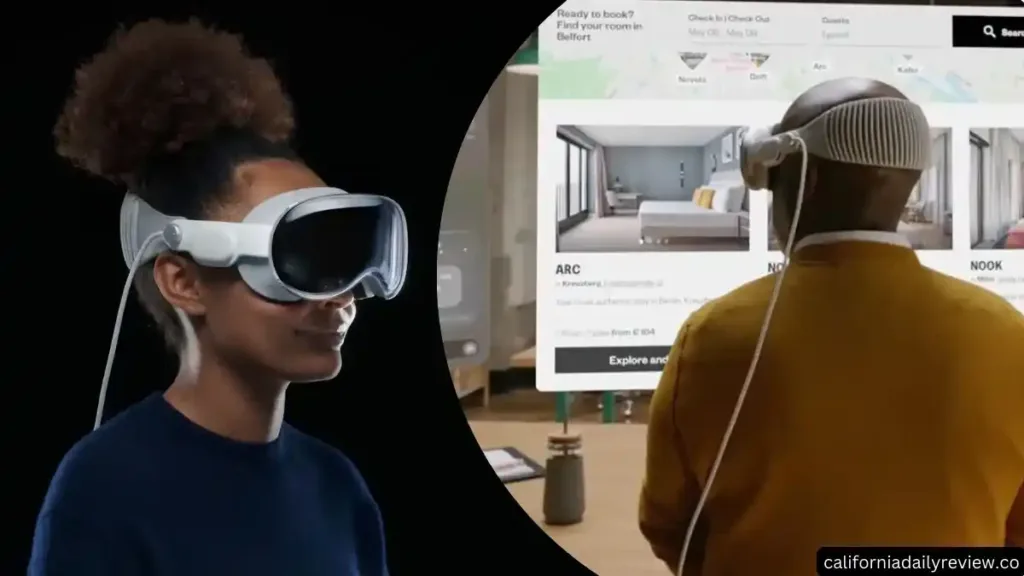In the rapidly evolving landscape of mixed-reality technology. Apple has set its sights on a new frontier with the release of the Apple Vision Pro. Priced at $3,499, this highly anticipated headset promises a groundbreaking experience, blending spatial computing with an array of features that extend beyond traditional VR and AR capabilities. As the device prepares to hit the market on February 2. Let’s delve into the key aspects of the Apple Vision Pro and dissect the hype surrounding its release.
Apple Vision Pro: Sale in the US on February 2
Spatial Computing and Interaction:
The Apple Vision Pro marks the tech giant’s first major product line since the Apple Watch in 2014. It introduces users to spatial computing, emphasizing control through hand gestures, eye movements, and voice commands. The addition of a Magic Keyboard and Trackpad provides productivity options. The device’s versatility is aimed at both work and play.

Innovative App Store and Multitasking:
Accompanying the headset is a brand-new App Store, supporting over a million apps from the iOS and iPadOS ecosystems. Apple promises a unique app experience tailored to the headset’s vision, enabling users to interact with apps using intuitive gestures and voice commands. Multitasking is enhanced through a 3D virtual environment, allowing users to place apps strategically for efficient workflow.
Entertainment Features:
On the entertainment front, the Apple Vision Pro boasts a virtual screen that mimics a 100-foot-wide display, supporting streaming from platforms like Apple TV+, Disney+, and Max. With HDR support and Apple’s Immersive Video format, users can explore 180-degree, high-resolution 3D experiences. The device also supports over 250 Apple Arcade titles and promises immersive gaming experiences.
Virtual Relocation and Immersive Environments:
For those seeking a break from reality. The Apple Vision Pro offers virtual relocation to serene environments like national parks or the surface of the Moon. The level of immersion is adjustable, allowing users to tailor their experience by turning the Digital Crown.

Integration with iPhone 15 Pro:
The Apple Vision Pro integrates with the iPhone 15 Pro and iPhone 15 Pro Max, allowing users to capture spatial photos and videos. These can be viewed on the headset on a “life-size scale,” creating a more immersive multimedia experience.
Revolutionized Communication:
FaceTime and other calls receive an upgrade through Vision Pro, introducing virtual representations called Personas. This feature enhances communication by showing hand movements and facial expressions, addressing the common issue of disconnection in virtual and mixed-reality environments.
Transparency with EyeSight and Optic ID:
To enhance social interactions, Apple introduced EyeSight, a technology that makes the Vision Pro appear transparent, enabling others to see the wearer’s eyes. The device also features Optic ID, a new authentication system for unlocking, password autofill, and Apple Pay payment approval. Apple emphasizes the privacy of eye-tracking information, assuring users that neither Apple nor third-party apps can access such data.

Conclusion:
As the Apple Vision Pro gears up for its release on February 2. It presents a tantalizing glimpse into the future of mixed-reality technology. While the device carries a hefty price tag, positioning it as a niche product for developers, early adopters, and Apple enthusiasts. Its innovative features and seamless integration across various functionalities may pave the way for broader adoption in the future. Only time will reveal whether Apple’s ambitious venture will indeed make mixed reality mainstream.






Comments are closed.